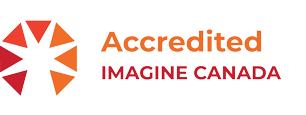By Owen Charters
An item out of the U.S. caught my eye last week and reminded me of the stark contrasts to Canada. A pilot project took students from underprivileged communities and gave them access to Ivy League classes, such as you might experience in the first year at Harvard or Stanford. And these students, who struggled to get GPAs that might grant them access to these prestigious institutions, excelled in the classes. The study demonstrated that perhaps it wasn’t their GPA, their perceived intellectual capacity that held them back from these schools. It was having access at all. The system they are in is holding them back, driving down their academic scores, and leaving them perennially overlooked for higher education in elite academia. But given a chance, they can compete with the best of them.
We don’t have a system like this in Canada. We don’t have legacy admissions (where preference is given to family relations of previous alumni). We have a much more equitable access system for postsecondary education.
But that doesn’t mean we don’t have something to learn from the experiment in the United States. There are real barriers in Canadian neighbourhoods, in communities where there are fewer opportunities, fewer supports for students. Few role models and mentors who themselves have completed and succeeded in postsecondary education. Teachers who are overwhelmed. A support system that’s thin and almost breaking. In the Toronto District School Board, fundraising for school improvements is discouraged, and outright banned for some capital items. The reason is that wealthy neighbourhoods would pour private money into their neighbourhood public school, creating a drastic imbalance for those schools that don’t have access to this type of fundraising. The system would be out of whack. Many school boards likely follow a similar policy. Ideally, any fundraising should go to fill significant gaps first—but there’s not much appetite to give to a public, government-run system in communities that are out of sight, out of mind. So the system continues.
And that’s where we come in at BGC. With formal programs like RBC’s Raise the Grade, or informal mentoring, or teaching STEM, like Fidelity’s STEAM Ahead, our Clubs try to fill the gaps. Because the gaps exist. While our students have better access to postsecondary education in Canada, many are still often overlooked. Sometimes it’s teachers who don’t see the hidden potential, sometimes it’s biases in the system, and sometimes it’s that the individual was taught not to believe in themselves. But if we can help them find it and take advantage of it, opportunity exists for everyone.
Opportunity changes everything.

